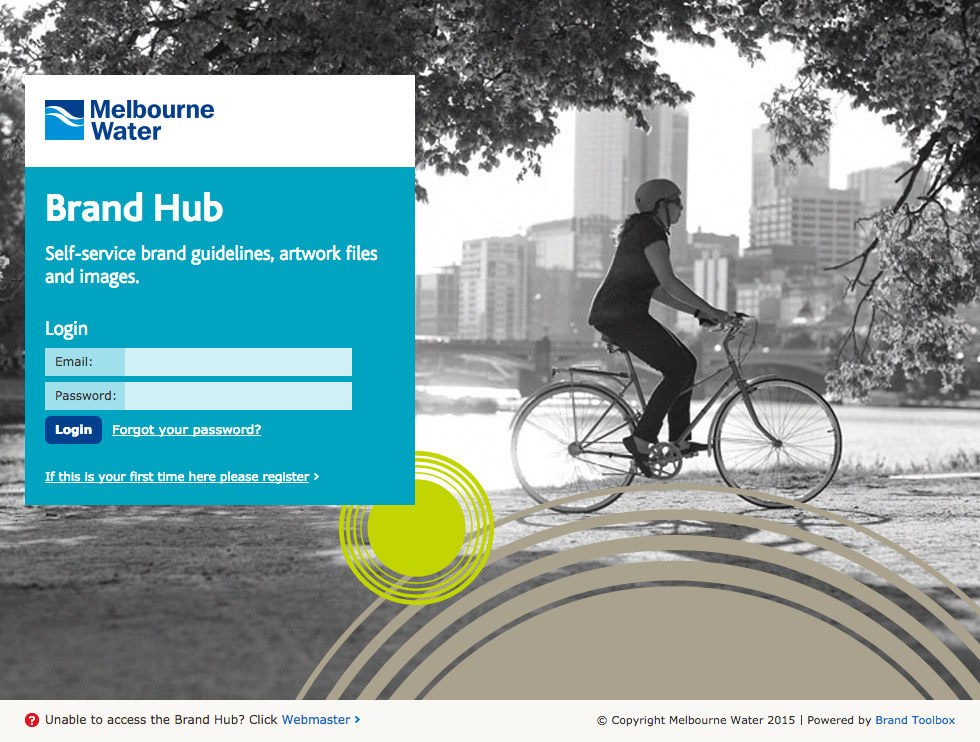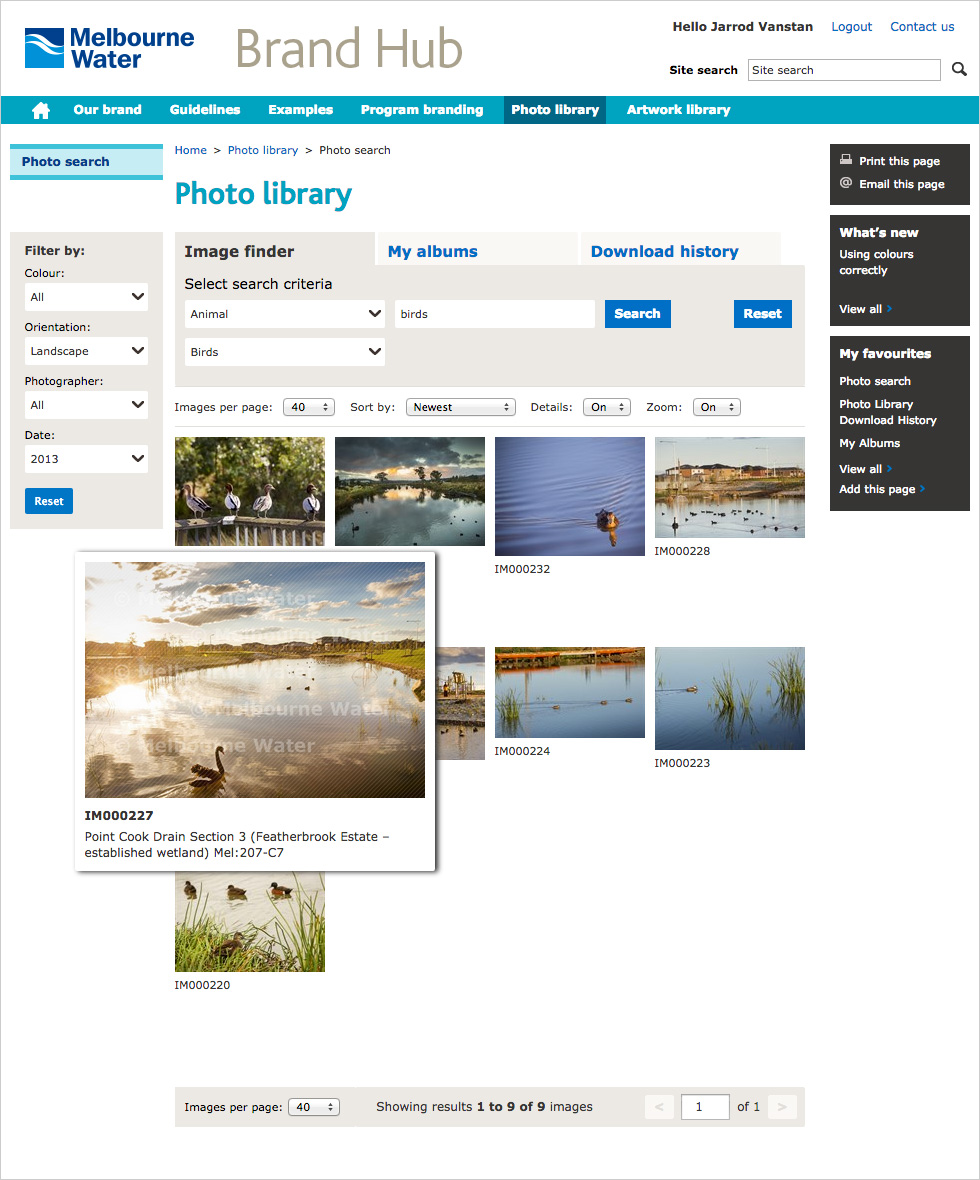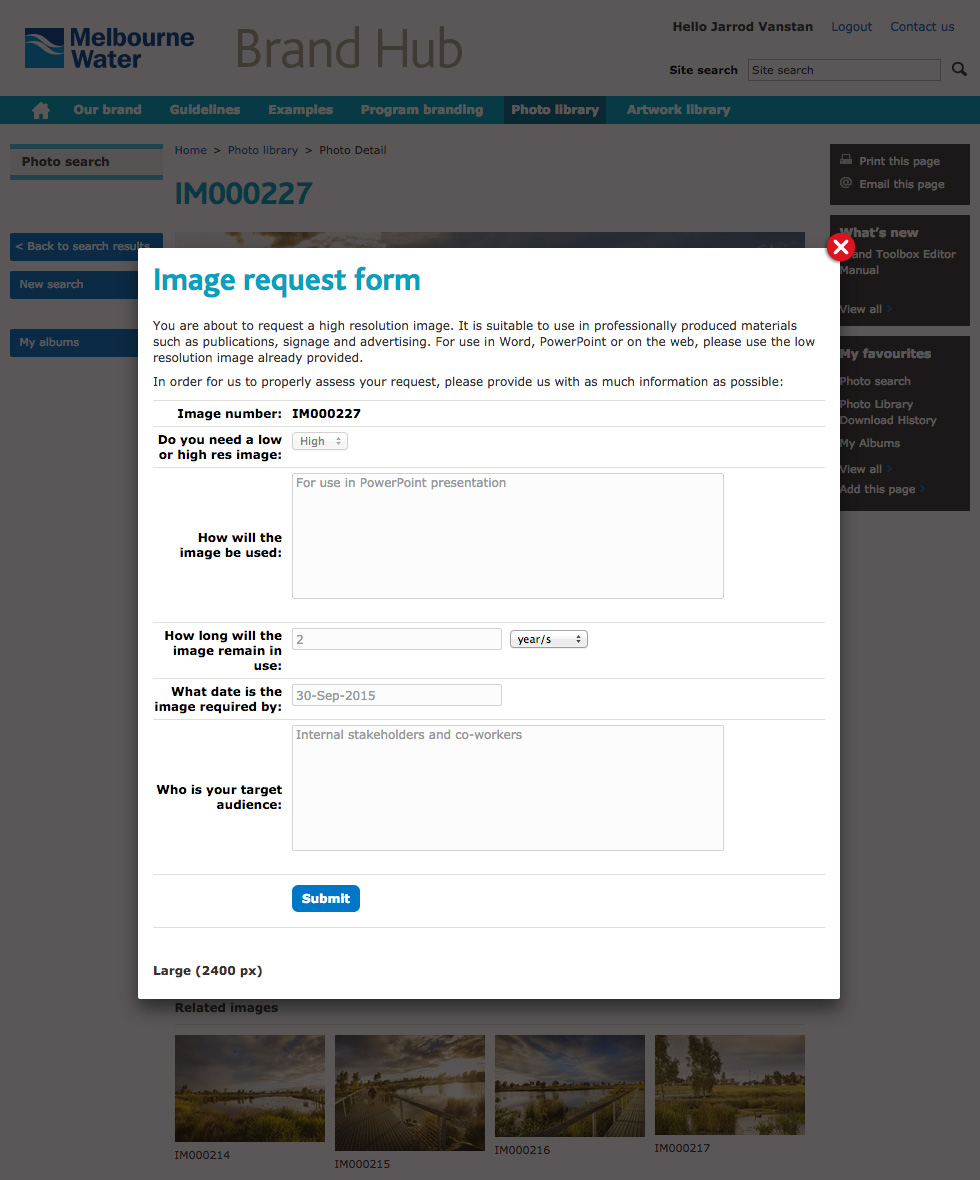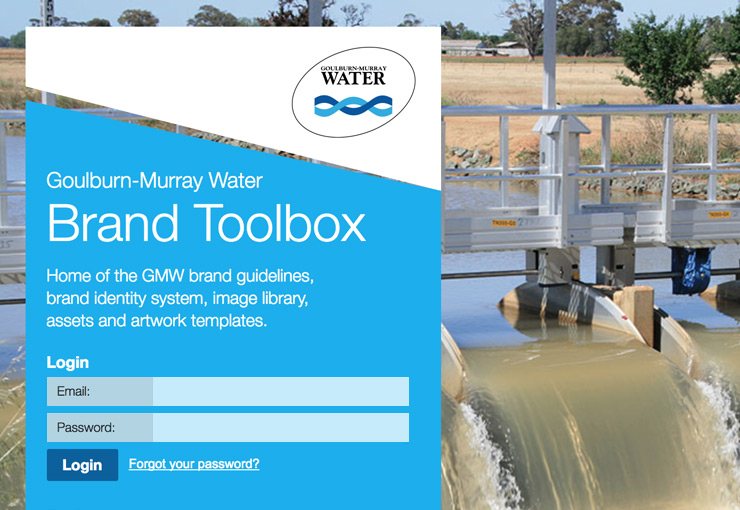Brand Toolbox combines Melbourne Water’s separate image library and brand guidelines websites into one integrated solution.

Melbourne Water’s extensive image library required us to make several customisations to the existing Brand Toolbox solution. With multiple photographers uploading images to the Brand Hub, the backend media section was overhauled to accommodate the needs of Melbourne Water.
Throughout this process, many considerations were given to improving user experience and accessibility. Updating the image upload feature to allow for bulk uploads, as well as batch modification of selected images, gives photographers and editors greater control over the photos published to the Photo library.

The backend customisations were followed through to the front-end, with additional filtering and search within results options added to the Photo library’s Image Finder. Brand Hub members can now search within categories and sub-categories, as well as filter by photographer and by date. The solution cleverly uses the JPEG image’s EXIF* data to display the date and time the photo was taken.

Melbourne Water also requested changes to the Image Request Form. Members can apply for approval for Large and Original size images, while Small and Medium are free to download for employees. Public members are able to download only the Small watermarked images.
Once a member has been approved for a requested image size, all of the smaller versions of that image are also available for them to download. To save time when applying for multiple images, the system saves a member’s previous form content, and pre-populates the Image Request Form for the next requested image.

The Melbourne Water Brand Hub is, by far, the most innovative and progressive installation to date.
*EXIF is short for Exchangeable Image File, a format that is a standard for storing interchange information in digital photography image files using JPEG compression. Almost all new digital cameras use the EXIF annotation, storing information on the image such as shutter speed, exposure compensation, F-stop focal number, what metering system was used, if a flash was used, ISO number, date and time the image was taken, white balance, auxiliary lenses that were used and resolution. Some images may even store GPS information so you can easily see where the images were taken.
Due to the confidential nature of the information, we cannot display the entire site. However a personal demonstration can be arranged. Contact us to organise a demo.
24 September 2015



